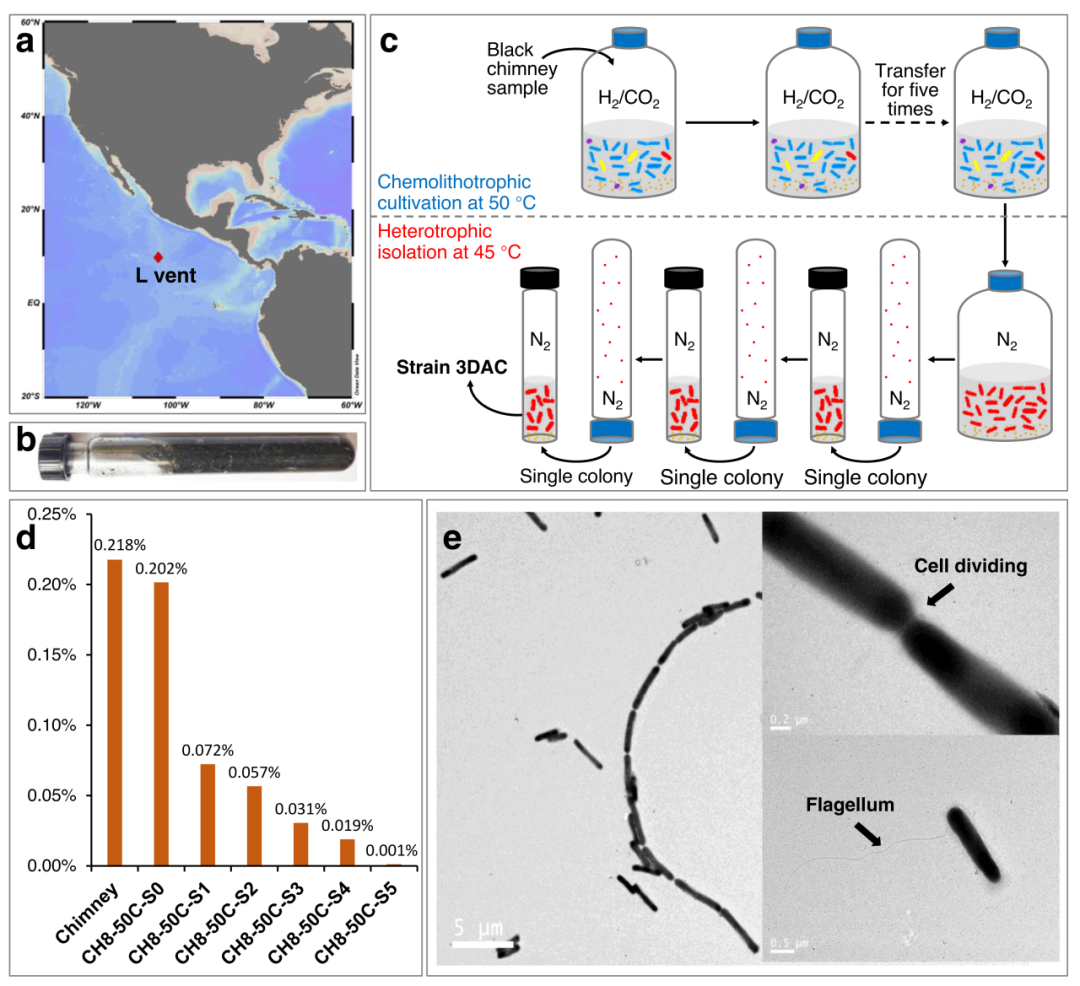Identification of a deep-branching thermophilic clade sheds light on early bacterial evolution
It has been proposed that early bacteria, or even the last universal common ancestor of all cells, were thermophilic. However, research on the origin and evolution of thermophily is hampered by the difficulties associated with the isolation of deep-branching thermophilic microorganisms in pure culture. Here, we isolate a deep-branching thermophilic bacterium from a deep-sea hydrothermal vent, using a two-step cultivation strategy (“Subtraction-Suboptimal”, StS) designed to isolate rare organisms. The bacterium, which we name Zhurongbacter thermophilus 3DAC, is a sulfur-reducing heterotroph that is phylogenetically related to Coprothermobacterota and other thermophilic bacterial groups, forming a clade that seems to represent a major, early-diverging bacterial lineage. The ancestor of this clade might be a thermophilic, strictly anaerobic, motile, hydrogen-dependent, and mixotrophic bacterium. Thus, our study provides insights into the early evolution of thermophilic bacteria.

a Location of L-vent at the 9°N vent field on the East Pacific Rise. The map was generated by Ocean Data View (Schlitzer, Reiner, Ocean Data View, https://odv.awi.de, 2021). b The black L-vent chimney sample collected in an anaerobic tube. c Schematic diagram of the “Subtraction-Suboptimal” (StS) strategy used to isolate Zhurongbacter thermophilus strain 3DAC in this study. d The track of proportion changes of 3DAC closely related sequences in the chimney sample, original enrichment, and different transfers. Labels: Chimney, the chimney sample; CH8-50C-S0, original enrichment; CH8-50C-S1 to -S5, the first to fifth subcultures transferred from the original enrichment. All samples indicate that strain 3DAC represents a rare species. e Transmission electron micrograph of 3DAC, in which 3DAC cells form long filaments with chains of up to 11 cells or more; the micrograph showing a connection between two 3DAC cells; and a long lateral flagellum of 3DAC. The TEM experiment was repeated four times, and long filamentous patterns were observed each time.
Link: www.nature.com/articles/s41467-023-39960-x


 loading......
loading......